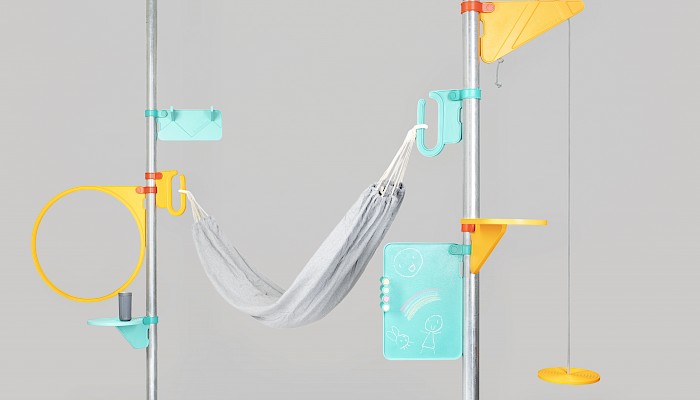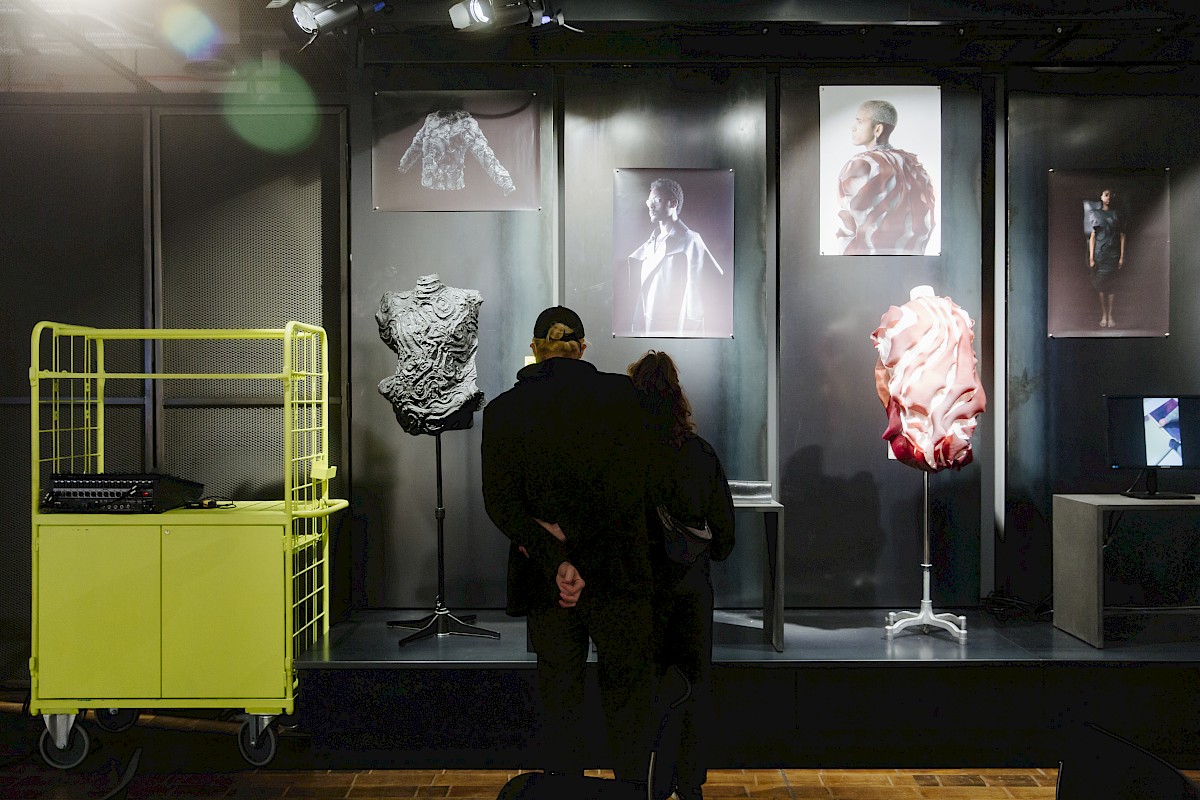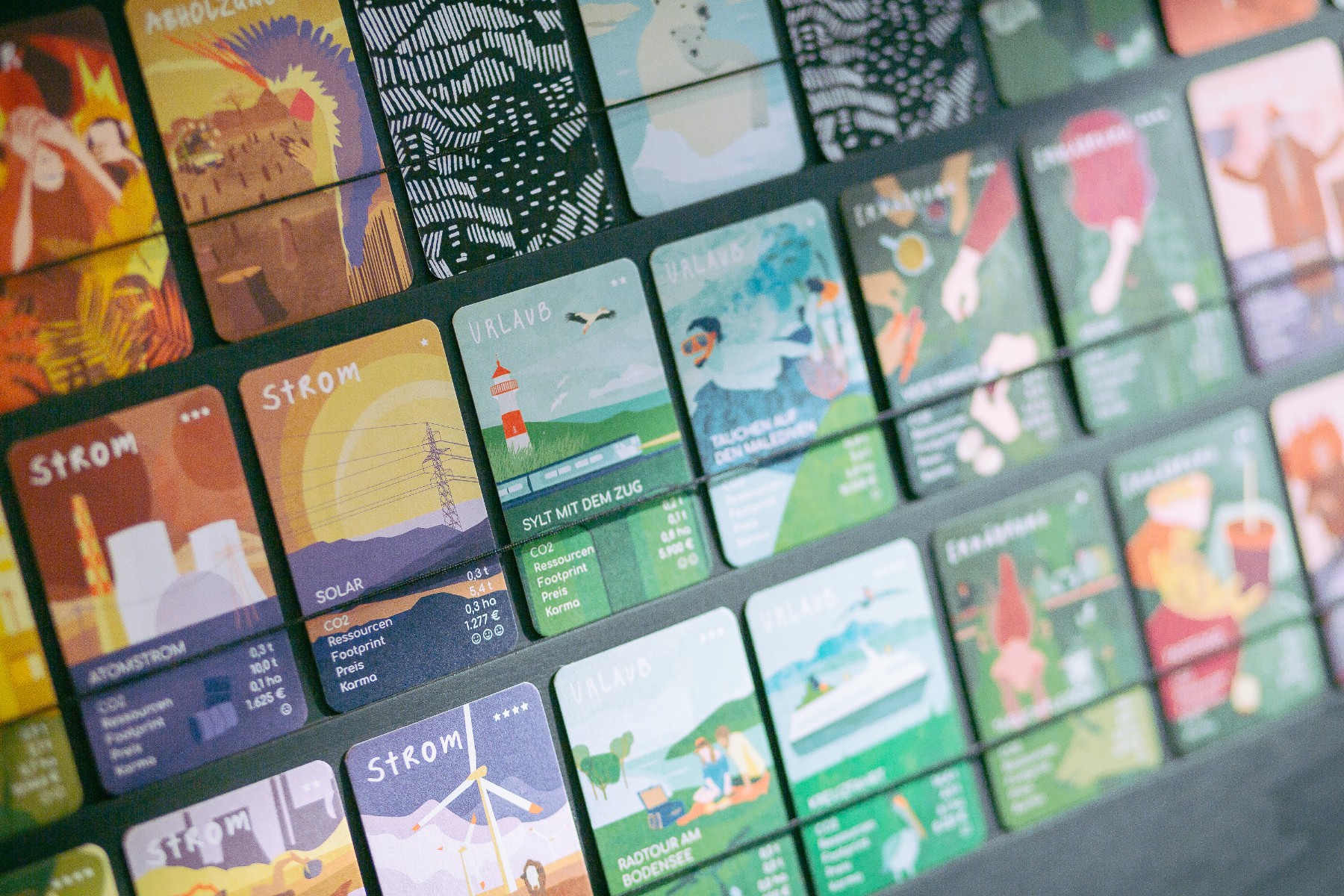
Can design show ways in which the economy, society and politics can use the experiences from the Corona crisis in a meaningful way? In 2020, the Silberstreifen Award selected ten Hamburg award winners who formulated answers with their prototypes. Carmen Gloger is one of the award winners with her climate quartet, a card game that informs young and old about the consequences of climate change. We talked to her about what lies behind designing and the profession of designer.
Isabel Neuendorf: How do you understand your work as a designer?
Carmen Gloger: It is a preoccupation with things and longings that are relevant in the future. Recognising longings and then weaving threads together is what's appealing.
For many, design sounds abstract. How would you explain the term?
Many designers don't like the term design and call themselves designers. Maybe that's a better description. We all strive to design our world, our life and the idea of it. On a small scale, we all design and are creative in many ways. You only have to go to Pinterest and Instagram to get an idea of that, but of course there is a difference with the design profession: when I design, I have a vision and idea of the outcome and I have to think about what it takes to develop that vision. Design involves many processes, people, techniques and materials. It's always about finding, making connections and formulating solutions. I love connecting things or diving into something I haven't mastered yet.
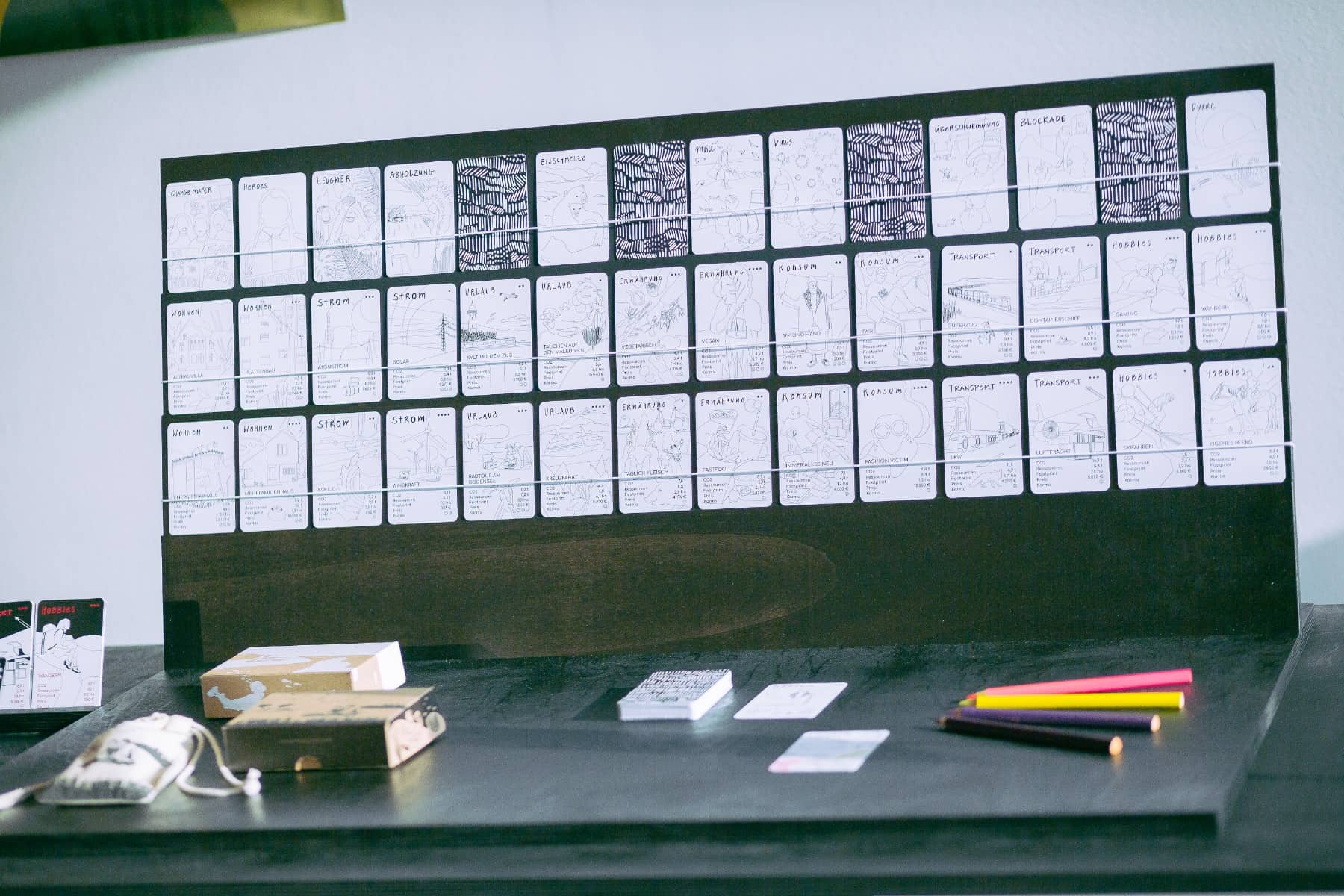
With the Climate Quartet you are part of the Silver Streak Award. In the game, climate activism meets social games. How did you come to combine these aspects?
In September 2019, my 23-year-old son and activists from the Fridays for Future movement asked if we, as designers and artists, could support their demonstration with posters. We were immediately hooked. One of our posters was: "There is no joker in the climate poker".
I was stuck with the idea that climate change is not a game, but that a playful approach to the topic is important.
What is the significance of play?
I believe that everything we surround ourselves with shapes us. This includes the games we play in our free time. Willingness to cooperate, the ability to empathise, emotional rollercoaster rides and a high degree of knowledge transfer are in every good game. The beauty of our game is that there is no one who can't relate to it: for example, through topics like nutrition, living or hobbies that appear in the quartet. I definitely didn't want to develop something that moralises.
You said that the idea for the quartet came from the Fridays for Future movement. How did it continue?
The original idea was clear: I wanted to make a classic quartet that illuminates our everyday life and makes the directly related consequences for the climate visible. I started looking for information and asking questions: Which topics, numbers and values are relevant and what is the goal of the game? What are the rules of the game? How do I imagine the design, the colours and the illustration style, what visual language do I want to bring into the world?
When the content of the concept was ready, it was clear that a larger team would be needed to realise what had been conceived. I am very grateful for the extraordinary, committed cooperation and the creative process of all those involved. My special thanks go to Ann Christin Müller for illustration and graphic design, Lukasz Chrobok for illustration and realisation and Till Wahnbeack for the number crunching. Everyone brought enthusiasm for the topic, their skills but also new perspectives.
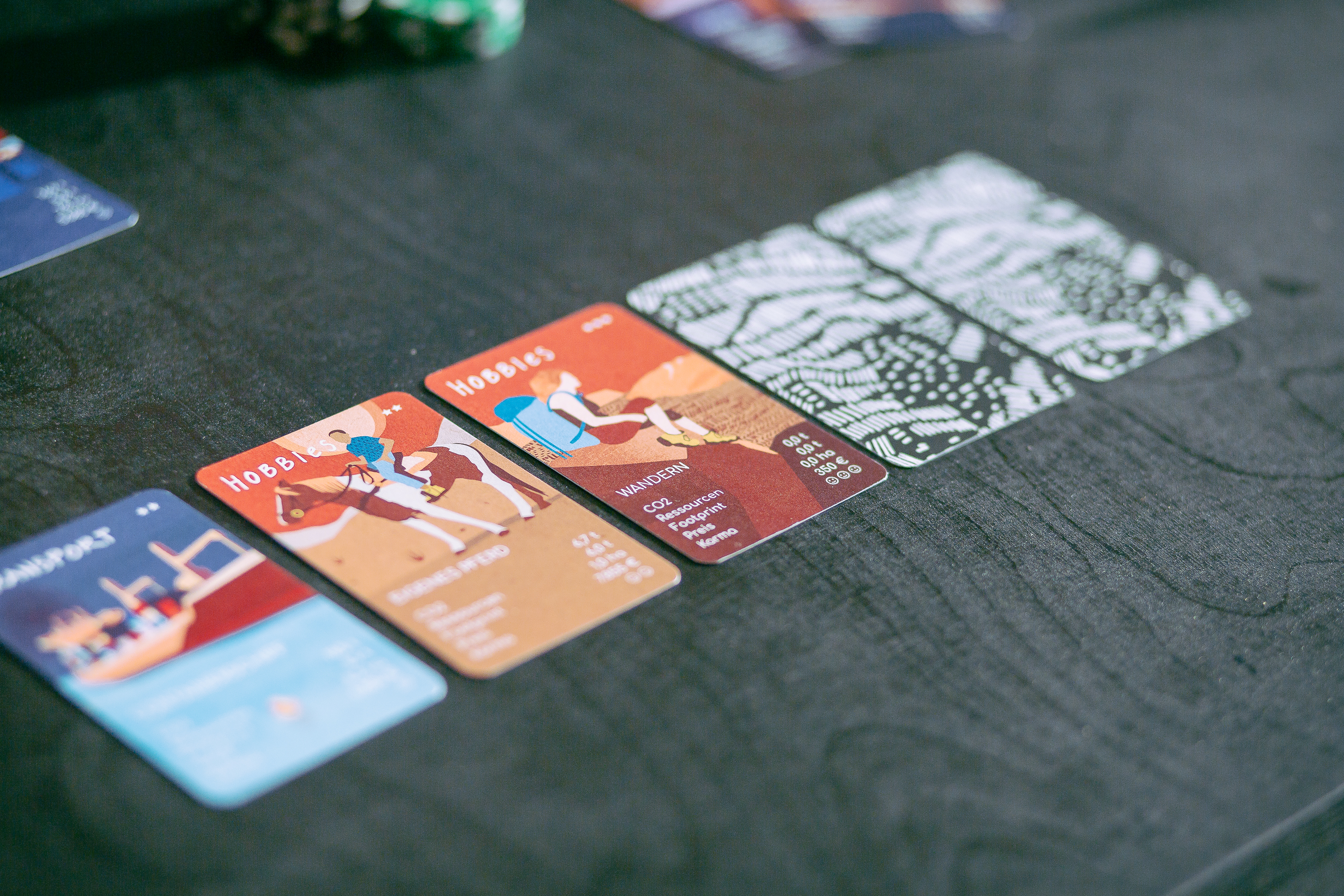
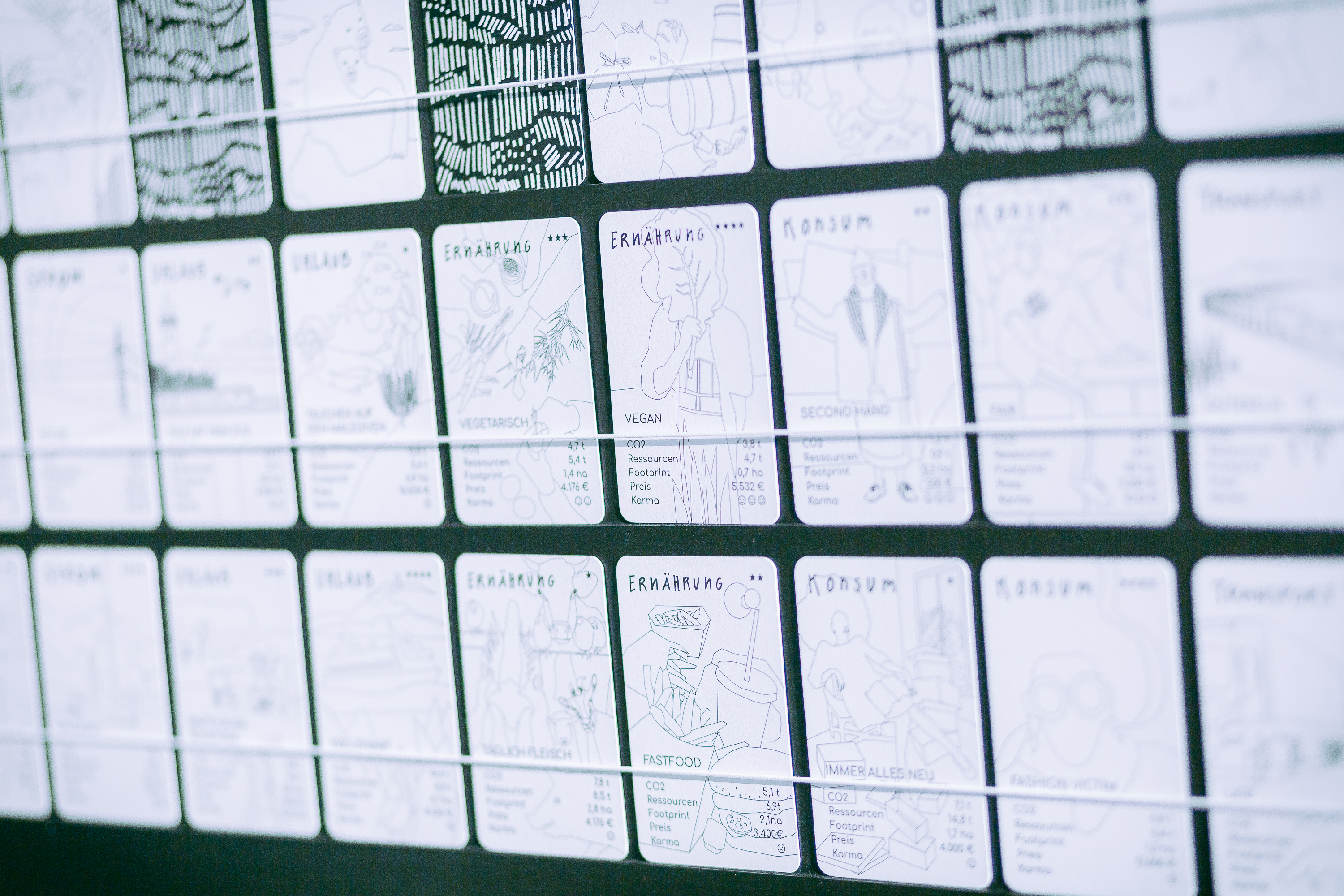
Did you also think about sustainability in the implementation of the game?
It was clear from the beginning that the game should be produced sustainably. The packaging I designed doesn't need glue and holds together thanks to the folding technique. All materials are recycled and the game should be produced in a CO2-netral and environmentally friendly way. I asked myself: "What else is sustainable? What if you could play many games with the cards so that it remains active for all generations and thus experiences longevity?" There are currently seven different variations of the game that can be played with the climate quartet. There are separate versions of cheat poker, rummy, a role-playing game, etc....
How did the Award support you in the design process?
At the time of the application phase, we were so far along that the card designs were ready and we wanted to make test games. But due to the lockdown, we didn't have the financial means to go into test printing. The award helped us to realise the test print and to move forward with our work. Without it, we wouldn't be where we are now.
What is the current status?
We are now in the starting blocks. The quartet wants to go out into the world and we urgently need funding to make it happen. In the future, part of the purchase price will go towards environmental protection campaigns. For this purpose, we want to design a website where the buyer can choose whether he wants to support the oceans or the forest, for example. You can also just play the quartet - it works self-sufficiently. But if you want to find out more about local campaigns or get actively involved, we will make information available on the homepage.

The Silver Stripe Award shows that design can respond to current challenges such as the Corona crisis or climate change. What are issues that are occurring within design right now?
I see the power of images and their visual language as a big challenge. That was a big concern for me during the conception. What is diversity, what is diversity and how can it be represented? When researching on the net, one quickly comes across visual stereotypes. For example, if I search for the keywords hobby, child and horse, I find blond girls cuddling their horse. We are surrounded by a visual language whose influence is enormous. As designers, we also help to invent it. That means we have to look carefully at what we are dealing with and what signals we are sending. For example, as long as fat, ostentatious cars are celebrated as status symbols instead of small, manoeuvrable cargo bicycles, climate change will continue unabated.
What do you think are the challenges for designers in their work? You mentioned the Corona period.
Corona showed: "We - the designers - and our professional fields are also classified as not (system)relevant". That's bullshit. The world of work is currently changing rapidly and presents us with great challenges. Home office, working part-time, organising leisure time, etc. When contact with other people and interaction is lacking, you question yourself and your way of life more. I think this is a big social issue that is gaining importance: Is what we do relevant? What kind of society do we want to live in? That is incredibly exciting and designers can offer help and solutions with their methods and visions.
Thank you very much for the exciting interview, Carmen!
Photos: Selim Sudheimer
More about the Award
Read more
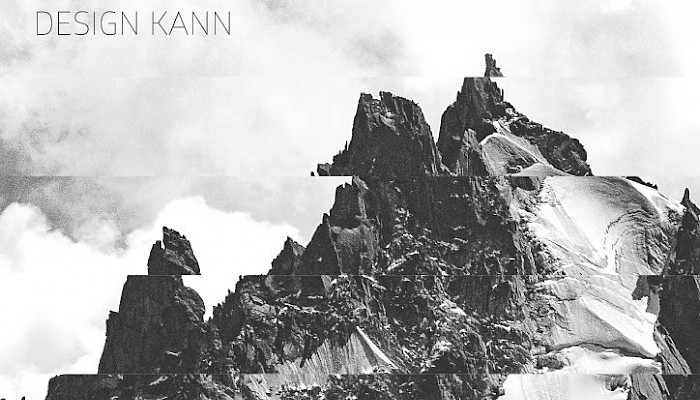
Beauty, innovation, revolution: design can do that!
How designers make their industry visible.
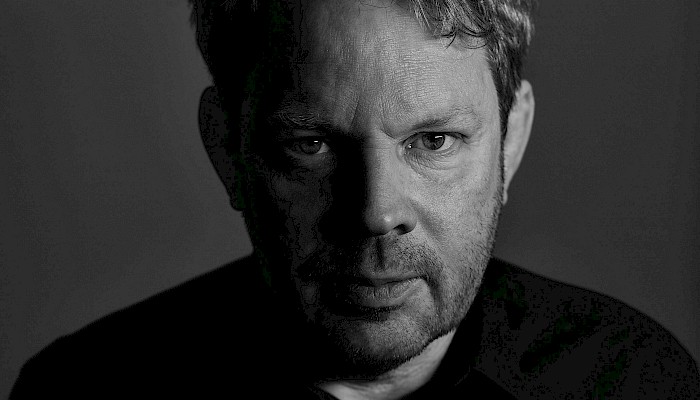
Götz Schleser on volunteering and promoting young talent
Why Götz Schleser promotes young talents from photography with the BFF.

XR Design: The World of Tomorrow
Together with next.Reality Hamburg, we asked experts how XR will change culture, medicine and e-commerce.
